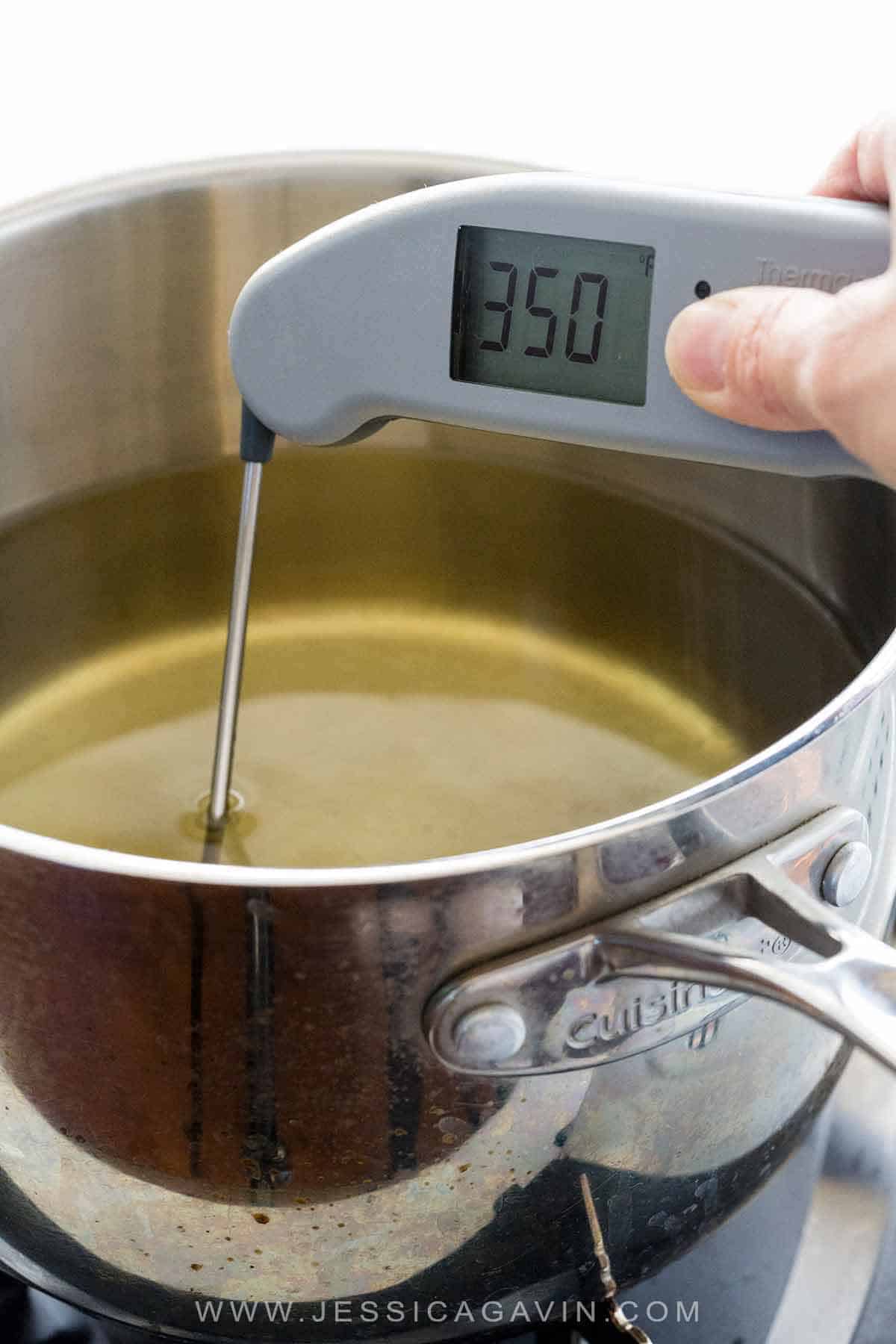Smoke Point Of Cooking Oil

It's important to know the smoke point temperatures of cooking oils and fats. This informational guide lists when common oils begin to break down and degrade. Making the right selection will help optimize nutrition, taste, and safety in the kitchen.

Cooking oils are an essential ingredient for deep frying and preventing food from sticking to pans. However, they all have limitations based on their composition.
Do you know how to choose oil for different cooking applications and why? Using the smoke point is one of the most objective ways to make a selection, keeping function, health, and safety in mind.
For example, when cooking at high temperatures like stir-frying or deep frying, it's best to select an oil with a high smoke point to provide a comfortable buffer during the cooking process. You'll also want to take into consideration the duration, as a quick saute can use butter which has a lower smoke point, but only because the time in the pan is not as long as pan-frying something like breaded chicken.
What is a Smoke Point
The temperature at which oil begins to break down into free fatty acids and visibly produce smoke. This temperature, measured with a thermometer, varies between different oils, and with prolonged heating, all oils will smoke. Maintaining this temperature can become unsafe and possibly start a fire if you reach the flashpoint of the oil.
Smoke Point Temperatures
| FAT / OIL | SMOKE POINT | APPLICATION |
|---|---|---|
| Butter | 300-350°F (149-175°C) | Saute, quick pan-fry, baking, roasting |
| Extra-Virgin Olive Oil | 325-410°F (163-210°C) | Saute, finishing oil, dressings, marinades, baking |
| Coconut Oil | 350-385°F (175-196°C) | Saute, pan-fry, baking, roasting |
| Sesame Oil | 350-410°F (175-210°C) | Saute, small amount for stir-frying |
| Vegetable Shortening | 360-410°F (180-210°C) | Baking, saute |
| Lard | 370°F (188°C) | Saute, pan-fry, baking, roasting, deep-frying |
| Grapeseed Oil | 390°F (195°C) | Saute, pan-fry, baking, roasting, dressings |
| Canola Oil | 400-450°F (204-230°C) | Searing, saute, pan-fry, stir-fry, baking, roasting, grilling, deep-frying |
| Vegetable Oil | 400-450°F (204-230°C) | Searing, saute, pan-fry, stir-fry, baking, roasting, grilling, deep-frying |
| Margarine | 410-430°F (210-221°C) | Saute, stir-fry, roasting |
| Corn Oil | 410-450°F (210-230°C) | Searing, saute, pan-fry, baking, roasting, grilling, deep-frying |
| Light/Refined Olive Oil | 425-465°F (218-241°C) | Saute, pan-fry, grilling, baking, roasting |
| Sunflower Oil | 440°F (230°C) | Searing, saute, pan-fry, baking, roasting, grilling, deep-frying |
| Peanut Oil | 440-450°F (227-230°C) | Searing, saute, pan-fry, stir-fry, baking, roasting, grilling, deep-frying |
| Clarified Butter | 450°F (230°C) | Saute, pan-fry, baking, roasting |
| Soybean Oil | 450-495°F (230-257°C) | Searing, saute, pan-fry, baking, roasting, grilling, deep-frying |
| Safflower | 510°F (265°C) | Searing, saute, pan-fry, baking, roasting, grilling, deep-frying |
| Avocado Oil, Refined | 520-570°F (271-299°C) | Saute, pan-fry, baking, roasting, grilling, dressings |
How composition affects smoke point
The structure of oils, especially free fatty acids, determines it's suitability for use in high-temperature frying. By definition, fats are solid at room temperature while oils remain liquid. Fats are made up of triglycerides, which are three fatty acids bonded to a glycerol molecule.
Most meat-based fats such as butter are high in saturated fats, while plant-based oils are high in unsaturated fats. The health benefits are better when cooking with plant-based oils. However, the taste of animal fats is more flavorful.
Smoke points change during cooking
When the oil is heated and put in contact with food the smoke point and recommended use duration reduces. The oil starts to react with the water from the other ingredients to form more free fatty acids.
Unsaturated fatty acids also oxidize when heated. Fresher oil will have a higher smoke point and then lowers over time with continuous heating. The rate at how quickly oil breaks down into free fatty acids can be indicated by its smoke point.
Know the limit
Cooking oil at the smoke point can create undesirable flavors from the breakdown and release of a chemical called acrolein which gives burnt food their characteristic aroma and taste.
Selecting an oil
Typically vegetable-derived oils have a higher smoke point than animal-based fats. The exception is olive oil which is closer in smoke point to butter depending on the level of refinement and brand.
Another thing to consider is how much the oil is refined. This process removes impurities that contribute to smoking, which increases the smoke point.
Filed under: Food Science How To
This post may contain affiliate links. Please read my disclosure policy.
I'm a culinary school graduate, cookbook author, and a mom who loves croissants! My passion is creating recipes and sharing the science behind cooking to help you gain confidence in the kitchen.

You May Also Like
Reader Interactions
Smoke Point Of Cooking Oil
Source: https://www.jessicagavin.com/smoke-points-cooking-oils/
Posted by: cappsutonce42.blogspot.com

0 Response to "Smoke Point Of Cooking Oil"
Post a Comment